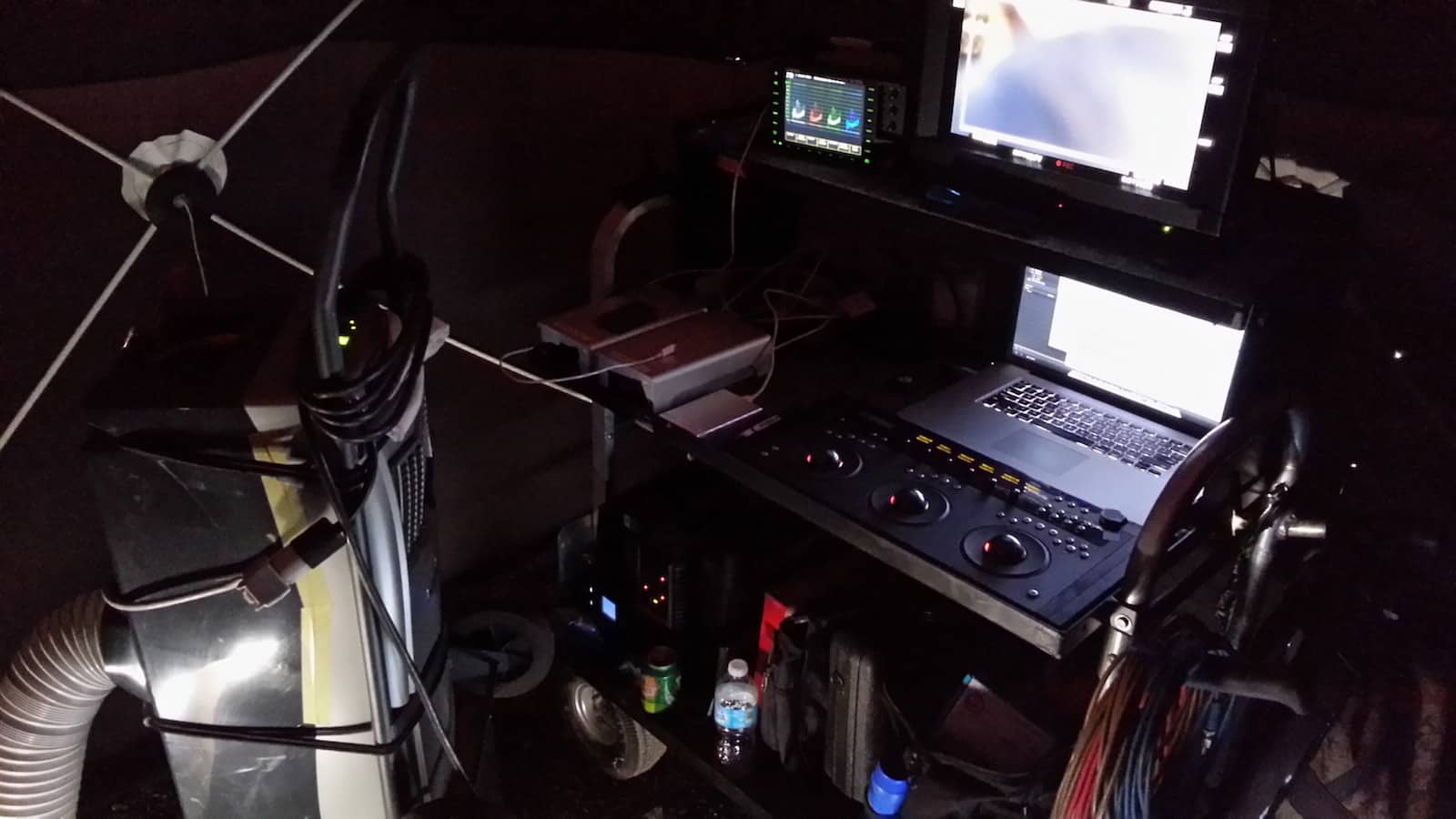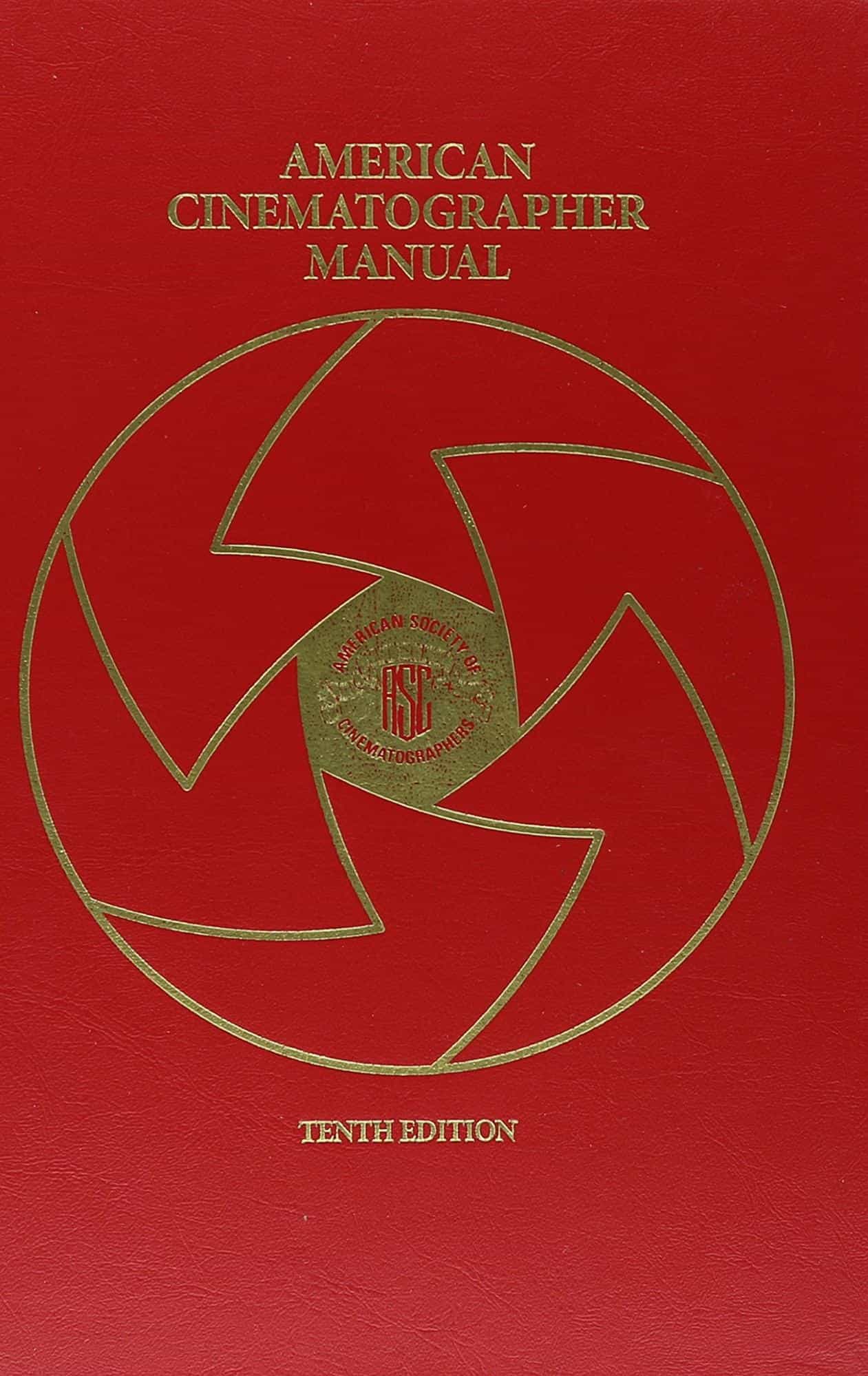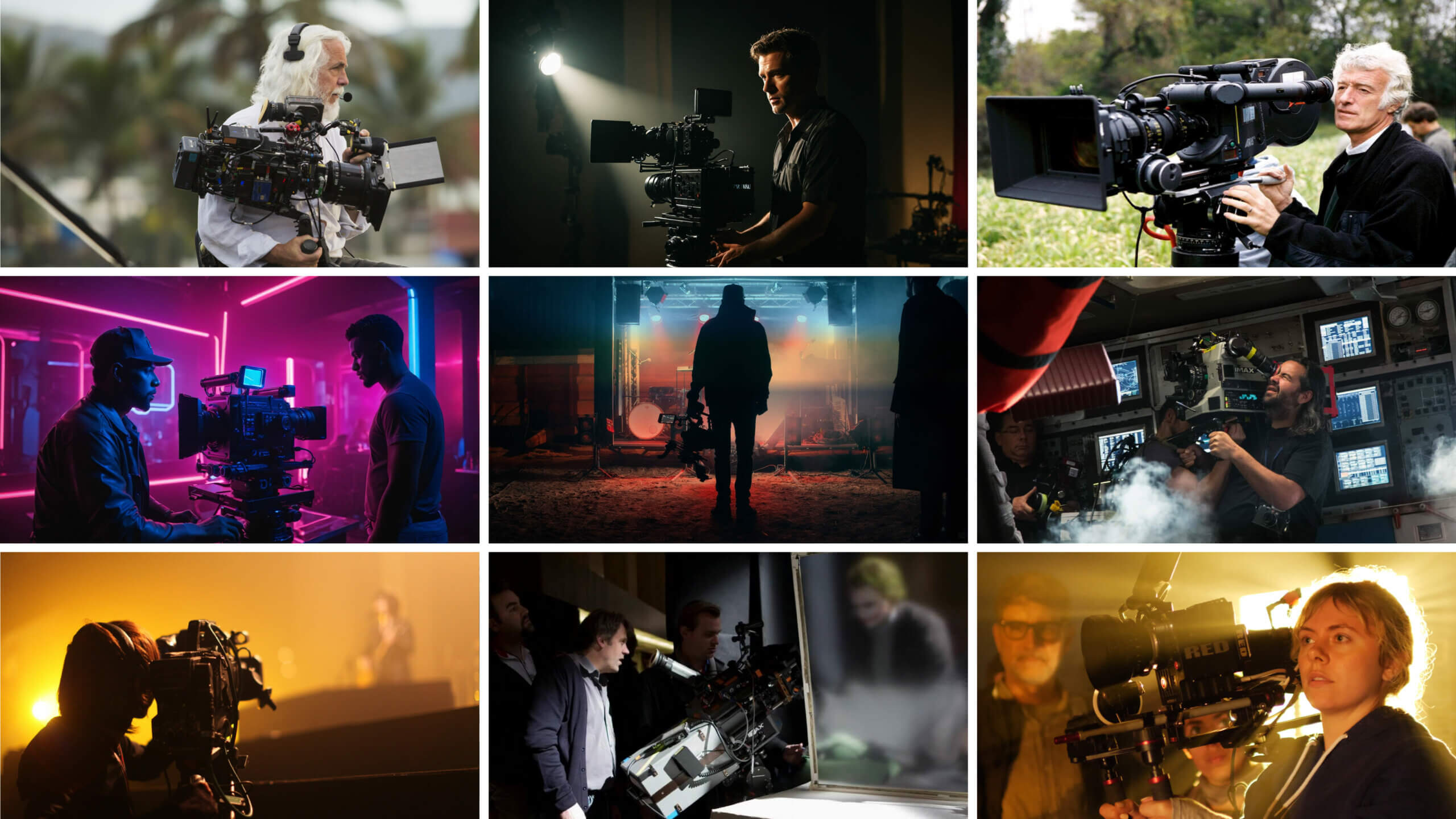Afilm set is a unique world that has to be experienced to be understood. There is a steep learning curve that comes with every film production. It can take many years before anyone is completely at home on set, and to master the plethora of film and cinematography terms.
But not everything on a film set is a trial by fire. We’ve put together an essential list of some of the most widely used film terms on working sets. We’re taking some of the mystery out of joining a film crew so that, whether you’re a newbie or a seasoned pro, the lingo won’t trip you up!
This glossary aims more towards cinematography terms but we also have an essential guide to film terminology that every filmmaker needs to know. Instead of an alphabetical glossary, we’ve broken this list down strategically by department and sub-department. Read it from start to finish to get a solid foundation of basic movie terms.
Cinematography Terms
What is an F-Stop?
An F-Stop is the number that measures the width of the aperture on the camera. Actually, it's a ratio of the focal length to the diameter on the sensor or pupil. It is also known as focal ratio.
F-Stop determines depth of field and the amount of light entering the lens. For more on this, see our essential guide to depth of field.
What is Aperture? • Subscribe on YouTube
Just remember the "F" stands for focal length. You might also hear the term T-Stop used instead and while these are highly related terms, they aren't exactly the same thing.
A Small Difference
What is a T-Stop?
Furthermore, T-Stops are more precise measurements and are commonly used with high-end camera lense. What's the difference between the F-Stop and T-Stop?
The F-Stop represents the theoretical value of light entering a lens in relation to the lens focal length.
The T-Stop, meanwhile, is the true value that transmits through a particular aperture setting. And the "T" stands for transmission.

The aperture is the opening through which light enters a camera
So, why don't all lenses use T-stops instead? It's expensive and requires a lot of time to conduct tests and determine T-Stop values, which is why many lenses settle for F-Stops. But high-end professional cinematography lenses typically rely on T-Stops for greater accuracy.
For a deeper dive, we have a complete guide to focal length.
Union Time
Local 600
Local 600 is the International Cinematographers Guild. It is a collective bargaining association which represents more than 8,000 camera department-specific workers worldwide.
The Guild is an offshoot and department of the International Alliance of Theatrical Stage Employees (IATSE). This Local, of course, is specific solely to the camera department.
Though, if one department on a film set is union, chances are they all are. Every cameraman wants to be in the union, the benefits are that good! See more on the intricacies of working with unions.
Time to Focus
Rack focus
Rack focus is the movement of a lens' focus from one subject to another within a shot. It is usually done in a creative or stylized manner. The length of the rack can vary from shallow to deep, offering more grandiose to more subtle effects, respectively.
Pulling focus is the constant adjustment to keep images in camera focus. The Focus Puller is one of the most important jobs in the camera dept. It's a role that requires training and skill for proper execution. In this video, we can see the many ways to use a rack focus.
Nobody racks focus like Bond, James Bond • Subscribe on YouTube
The Focus Puller is also usually called the 1st AC, or first assistant camera. Plainly, this is the person on set who pulls focus.
Always Needed
Gaffer tape
Gaffer Tape is a cotton-based, pressure sensitive, heat-resistant adhesive used on film sets, usually coming in an array of colors. To gaff is to apply gaff tape, with the action taking its name originally from the tape itself and the crew member most likely to use it.
Gaff tape is one of many essential cinematography terms
On set, gaffer tape is often used to fix wires and cables to a surface, such as the floor or furniture, for safety or concealment purposes.
In the Eyes
Catchlight
A catchlight is a light source that results in a specular reflection in the eyes of the subject. The catchlight is also known as an Obie, after Hollywood actress Merle Oberon.
The technique was first invented and referenced by Oberon’s husband, Lucien Ballard. It’s said that Ballard wanted to draw attention to a special glimmer in Merle's eyes to distract viewers from scars she'd suffered in a long-ago automobile accident.
The catchlight is the mark of a stylish photographer
Many filmmakers look to the eyes as point of focus, and a catchlight gives the eyes a little extra pizzazz, a sparkle. The catchlight is typically a designed, intentional effect, but sometimes it occurs unintentionally.
Monitors
Electronic ViewFinder
An Electronic ViewFinder is a device used to compose shots where images taken from the lens are electronically projected onto a monitor or display. An EVF is often used to focus shots and can be used in conjunction with the camera itself.
The non-electric version is the Optical Viewfinder which is what most people are looking into when looking into the lens of a camera. With the optical viewfinder, light reflects off a mirror and through a prism to display an image.
ColorFul
CTB, CTO and CTS
CTB (Color Temperature Blue), CTO (Color Temperature Orange), and CTS (Color Temperature Straw) are gel filters commonly used to alter the color of light output or temperature. CTBs and CTOs are often used in film lighting, television, cinematography, and photography.
Know your cinematography terms for gels
Using CTB/CTO/CTS gels are a form of color correction accomplished during physical film production. The gels change the color temperature in the scene, setting or on the subject without disrupting the white balance.
Camera Movement
Western and Doorway dollies
A Western Dolly is a large, heavy duty platform, longer and wider than those used as a standard dolly.
Can you tell the difference between doorway or western dolly?
A Doorway Dolly is the small and versatile sibling of the Western Dolly. The Doorway Dolly is considered a more standard dolly.
Related Posts
Lights!
Kinoflo
Kino Flo, also Kinoflo (with no space) or kinoflo (lowercase) is a company whose main objective is producing light for film, television, and theater.
The name kino has become nearly synonymous with the lightbank kits professionally referred to as "diva kits." Sort of how Kleenex is a brand name for tissues. The term kino is derived from the Northern European and Slavic terms for Cinema.
Learn to set up your kino flos
Just to make things extra confusing, Kino is also the company name of a film distributor in the United States, and it's the name of a famous old movie palace in Berlin (Kino International).
For more on this, see our guide on the best lighting kits for filmmakers.
SOFT LIGHTS
Chimera
A chimera is a piece of film production equipment used to achieve soft lighting. In cinematography terms, it is one of the most important tools in a filmmaker's arsenal.
Create and control your lighting with chimera
The chimera is technically a lightbox and can come in the form of many different shades or fabrics. Each lend a certain quality depending on how they are used and when.
LIGHTING 101
Bounce it
In cinematography terms, "bounce it" means to use a reflector or other equipment in an indirect way to light or highlight talent. For more on lighting techniques, see our 3-point lighting setup guide.
CINEMATOGRAPHY FILM TERMS
On-set vocabulary
Film terms are any words or phrases used in film and television production that have evolved over the life of the industry.
A general knowledge of film terms is necessary for moving up in any department on a film set. Check out our complete guide to film terms for more general and comprehensive terminology.
Film and cinematography terms you should know
Many of these film terms are used to suss an individual’s familiarity with a department, the film set or the industry itself.
Here, are a few examples of some film terms that are most common to every set. However there are an endless number of film terms one should learn and know very quickly.
Supplies
Expendables
Expendables are any of the secondary or support equipment, supplies or products necessary for use in film production. Expendables are most heavily associated with the camera, grip and electric departments.
However, expendables can have universal applications, from gaff tape on the production desk to a compressed air canister used to clean a keyboard or the gate of a film camera.
ALMOST DONE FOR THE DAY
Abby Singer
Abby Singer is both a 1st AD and a film production term that refers to the penultimate, or second-to-last, shot of the production day.
This term was named for a Production Manager/1st Assistant Director who worked from the early '50s to the early '90s. “Abby Singer” reminds the crew that they are not done quite yet but soon will be.
The man, the myth, the movie term
DONE FOR THE DAY
Martini shot
The Martini shot is the very last shot (set up) of the day. It is believed to be named after a beer advertising campaign from the early '80s (It’s Miller Time…”) that recognizes a classier cocktail benefiting the entire film production.
It’s also been accredited to the quip, “The only shot after this will be from a Martini glass.” In cinematography terms, a crew member's favorite word and/or drink just might be a Martini.
HOMEBASE
Video Village
Video Village is the staging area of monitors connected to the camera feed(s). This is generally composed of a seating and viewing area. It was devised to keep the action of the staging area free of extra personnel.

A typical video village doesn’t have to be covered
It is also a place for the script supervisor to work in tandem with other department heads to perform continuity assurances and last looks. For more on this, see our ultimate guide to script supervisors.
On-Set Safety
Sarah Jones
Sarah Jones is one of the most recent additions to film production terminology. Saying the name "Sarah Jones" is an invocation to remember on-set safety procedures.
Sarah Jones was a camera assistant who lost her life because of negligence on set. Her untimely passing is invoked on-set when any situation demands reconsideration of the safety in a production.
This term is both an homage to, and reminder of, a fearless member of the camera department. Equally, it is a reminder that safety is the most important thing in production. For more on set safety, see our guide on decreasing insurance liabilities.
Sarah Jones is an essential film term
The tragic passing of Sarah Jones led to a renewed emphasis on safety on film sets, and prompted the creation of the Sarah Jones Film Foundation.
CODENAME
C47
A C47 is a clothespin. The term is often used to test the neophyte's familiarity with the workings of production and on set.
Nevertheless, a C47 is another term for clothespin. Knowledge of the term outside of the grip department is used almost solely to infer a person’s comfort on set.
In the Golden Age of Hollywood, "C47" was first used to mask the cost and need for such a ubiquitous piece of equipment on the film budget.
An essential term you won’t forget is the C47
No producer will spend good money on clothespins, for crying out loud, but a producer who doesn't know much about technical film terms won't hesitate to pay for a bunch of C47s.
PIT STOPS
10-1 Situation
When either talent or crew is in the loo (that's bathroom to you). 10-1 and 10-2 are not the same thing — if you remember your childhood potty numbers, you'll know what we mean.
ROGER ROGER
Copy That
“I understand that” in on-set jargon when communicating with a walkie. For a deeper dive, see our complete guide on walkie talkie lingo.
MOVING
Crossing
When a member of the crew passes through a hot set. Just don't make the mistake of "crossing" once the cameras are rolling. Trust me.
READY!
Last Looks
This is a call to every department that the camera department has finished its preparation and the scene is ready to be filmed.
CLAPPERBOARD
Tail Slate
A slate taken at the end of the scene rather than the beginning. For more, see our ultimate guide on how to use a film slate.
Slating is usually the job of the 2nd Assistant Camera
Not Baseball
Striking
To take away a piece of equipment, usually lights. It can't be stressed enough that you have confirmed permission to strike anything.
Location Scouting
What’s your 20?
This is used to ask where someone is currently located. Another fundamental piece of cinematography jargon.
A WORKING MANUAL
Read up on the job
If you are already in the camera department or a director of photography there are many things that you may have learned in your time on set.
Every set is different and therefore every crew member has come across their knowledge in a very specific way. There are plenty of manuals for lighting equipment, but there aren’t so many on how to lead your dept.
Most DPs will have had plenty of mentors as they worked their way up the ladder on set. But if you are new to having a crew, by all means read about, ask about or even mimic what you’ve seen before.
Just in case you came up on a set that was out of the ordinary or very specific to a long term project, here is our refresher.

This manual is chock full of technical movie terms
Everyone's Favorite
Meal times
Follow on-set meal time etiquette. When lunch time finally arrives, it can seem a bit like a high school cafeteria.
There is a preordained order to where one sits at meal times and usually it is by department. This is a good rule to follow if simply to discuss the workflow of the day and what work needs to be done.
Also, when lunch is called, everyone gets in line to eat, usually by position. See where you are on the call sheet. The call sheet is a good determination of where you and the crew should stand in line unless specifically directed otherwise.
For more on this, see our ultimate guide to call sheets.

Catering and meal time rules on set are essential to know
When the AD calls "last man" the clock will stop for half an hour. Thirty minutes later you’re "back in" (on the clock). This has more to do with union regulated meal times and should be observed religiously.
If you see talent or department heads at the craft services table, do not look at this as an invitation. They may very well be working on the run. It isn’t necessarily a time to chat or network.
Professional Etiquette
Keep your distance
What do you call the talent? For starters, don’t call them anything. Remember they are often times there to play another character or be in another emotional headspace than you may be used to seeing them in.
You cannot take it personally, you cannot proactively engage. They are working when others are not. Let them be your guide and still tread lightly. For more on communication on-set, see our guide on working with difficult talent.
Speak to the 1st AD if you have questions that will involve your work. If it’s socializing, be aware of their subtle clues (e.g., are they in makeup, smoking, laughing, or in a corner talking to themselves?).
On working as an actor prepares
Don't Act a Fool
Model behavior
Show your crew how to behave. Say "hello," introduce yourself and get to know people a bit before you give orders. Ask about the families of people you know. Use given names...or be formal. Furthermore, give credit for trying.
Mention “my crew…” to anyone and they will know you mean your department and its welfare. Your crew will look to you and the other department heads to see what is acceptable and appropriate behavior. Remember, you only get one chance to make a first impression with your crew.
Scene Geography
Be mindful of the camera
Whether the camera is running or not, even if no one is doing anything of note, you must ALWAYS know where the camera is. No one can do anything without the camera — whether it is tiny or large, expensive or less so. Ultimately, that camera is the reason everyone is there.
The primary responsibility of the camera department is to ensure the safety of the camera. You must know who has the camera, why, and for how long? This is true in a literal as well figurative, or storytelling, sense. Camera placement is the reason the DP is on set. For deeper dive, see our post on what does a cinematographer do.What’s the camera got to do with it?
Use Your Words
Effective communication
Communicate your responsibility and goals to the crew before shooting starts so everyone on set is on the same page, both creatively and technically. You can do this with shot lists or with storyboards. You might even do this with mood boards.
Luckily, this is much easier today than it has ever been. Before you get on set, the senior members of your crew should know what’s the main objective for what you are shooting that day.
In addition, your team will often want a heads up regarding the next day’s shoots.
Anything relevant to the shoot, whether it be company moves, an extra long day, a short lunch, special gear or equipment needed, should be communicated as far in advance as possible.
Stay Positive
Negative criticism
Discretion and diplomacy are very important on any set. The criticisms or observations that you offer can be infectious. You don’t ever want to be known as the “Negative Nellie” on set.
If you have something pertinent to whatever you’re shooting, make sure you’re speaking to the right person. Maybe even remember what they say to children in situations when you don’t know whether to speak up or not: is it true, is it necessary and is it positive?
Be Loyal
Double booking
There is nothing worse than a member of your team being half way out the door and you have not finished shooting yet. This is doubly true for any department head.
It is demoralizing at best and poor work ethic at worse and a good way not to be invited back to the team. To avoid situations like this, see our how-to guide on wrapping your film production on time.
Don't Get Curious
Stay in your lane
Don’t touch any other department's equipment. This should go without saying for everyone on the set.
Everyone has their own job to do and it will never be helpful to touch equipment, crew or anything that isn’t specific to your department.
In the same vein, no one should be touching anything in the camera department without express permission. Damages and thefts happen on many sets. Don’t tempt the fates.
Freeze!
Don't move yourself
Be still during takes, no matter how much you need to 10-1 on set. Do not move at all if you are in view of where the shoot is taking place. A fidget or sudden movement can really distract the focus of the scene from an often times very calibrated performance.
Even sensing someone wiggling uncontrollably during a take could steal attention away and cost the production a take.
LEAVE IT ALONE
Don't move anything else either
Not even the smallest item can be moved after the Director or 1st Assistant Director yells, “Action!” There have been some public examples of how talent can react in this situation. None of them are good. Again, do not move equipment or anything once someone yells action. You will regret it.
For more Assistant Director responsibilities, see our guide on what does an Assistant Director do.
RELATED POSTS
FINAL WORDS
Wrapping up cinematography terms
There are many lessons to be learned on-set over the course of a full career in Hollywood. Knowing the basics will definitely give you a leg up once you find yourself leading your own department.
Just remember — everyone starts somewhere and more than likely it was at the very bottom of the on-set pecking order.
Treating everyone with respect, remaining curious and inquisitive, and being true to the craft you’ve undertaken, are the most important actions you can have. Perhaps you’ll one day be so at home on a film set that a new film term will be coined in your honor.
But for now, raise your Martini.
UP NEXT
Ultimate filmmaking glossary
We've covered many film terms and cinematography jargon but this is just the beginning. Up next is our ultimate filmmaker glossary with terms covering every aspect of filmmaking and the film industry. This is a tremendous resource for any filmmaker who comes across a term, a technique, a piece of equipment, or just general jargon that they aren't familiar with. Bookmark this guide and you'll never need another Google search for film terms.
Up Next: Definitive guide to film terms →
Showcase your vision with elegant shot lists and storyboards.
Create robust and customizable shot lists. Upload images to make storyboards and slideshows.
